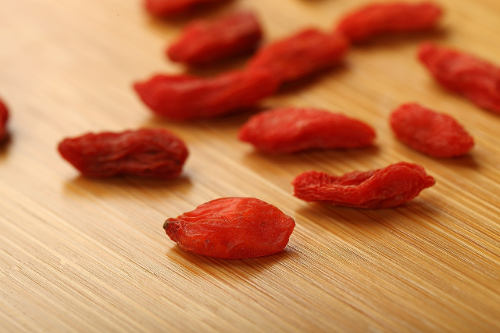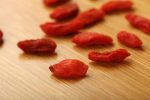
I call berries “nature’s miracle fruit,” because they contain a large concentration of specialized chemicals called flavonoids, which naturally occur in our food supply. Flavonoids contain various pigments, which can appear blue, red, purple, or deep orange; these pigments are referred to as anthocyanins.
Anthocyanins give fruit and vegetables their characteristic bright color and are found in higher amounts within the pulp and inner skin surfaces—the parts of fruit that most people throw away!
The foods that contain higher amounts of anthocyanins are blueberries, raspberries, cranberries, blackberries, bilberry, grapes (and their skins), peaches, blackcurrants, and red cabbage.
A lot of research has been done on the pigments found in these foods to find out what their health benefits are. And what researchers have found is that these are nutritional superstars when it comes to the development of cardiovascular disease.
Eating foods with anthocyanins can decrease free radical activity inside your artery walls and reduce the inflammatory response, which can cause plaque development to begin or progress.
Another interesting finding is that these fruit pigments can also increase the amounts of “good” LDL cholesterol in our arteries, which can remove harmful fats from your artery walls.
Studies also show that a higher intake of anthocyanins can decrease blood pressure and artery stiffness by decreasing the level of inflammation inside your arteries.
Over time, higher levels of inflammation within your arteries can actually change the structure of the artery wall, causing it to lose elasticity, which can lead to high blood pressure.
Anthocyanins can also help with insulin sensitivity. The intake of these chemicals from red wine and berries has been linked to a lower risk of developing type 2 diabetes because of its beneficial effect on the way your body uses insulin to control blood sugar. These chemicals improve your cells’ ability to recognize insulin once it is secreted following a meal.
But the health benefits of berries, and the other foods in this category, goes even further.
The anthocyanins contained within berries are known to be potent free radical scavengers, which can help prevent damage to the cells that precipitate cancer growth.
These pigments can also help decrease the precancerous cellular damage that smoking can inflict on your lung tissue.
There are lots of studies that have found a positive link between the intake of these foods and the development of many types of cancers, so eating more berries may be one of the ways you can prevent cancer from developing.
To get the needed amounts of anthocyanins in your diet, try eating one to two servings of fresh or frozen berries daily.
Always ensure that you eat the skins, as well as the pulp, because they contain the highest amounts of these super-healthy pigments.
Sources:
Wallace, T.C., “Anthocyanins in cardiovascular disease,” Adv Nutr. January 2011; 2(1): 1-7.
Hassellund, S.S., “Effects of anthocyanins on cardiovascular risk factors and inflammation in pre-hypertensive men: a double-blind randomized placebo-controlled crossover study,” J Hum Hypertens. February 2013; 27(2): 100-6.
Jennings, A., et al., “Higher anthocyanin intake is associated with lower arterial stiffness and central blood pressure in women,” Am J Clin Nutr. October 2012; 96(4): 781-8.
Hou, D.X., “Potential mechanisms of cancer chemoprevention by anthocyanins,” Curr Mol Med. March 2003; 3(2): 149-59.
Cutler, G.J., et al., “Dietary flavonoid intake and risk of cancer in postmenopausal women: the Iowa Women’s Health Study,” Int J Cancer. August 1, 2008; 123(3): 664-71.













